As they say, everything is bigger in Texas, including the tallest tree in the state! Being almost as old as the state itself, this tree survived Texas’s history of logging, farming development, and commercial forestry. At last, the tree may thrive in peace thanks to its home, Boggy Slough, becoming a conservation area.
The Tallest Tree in Texas
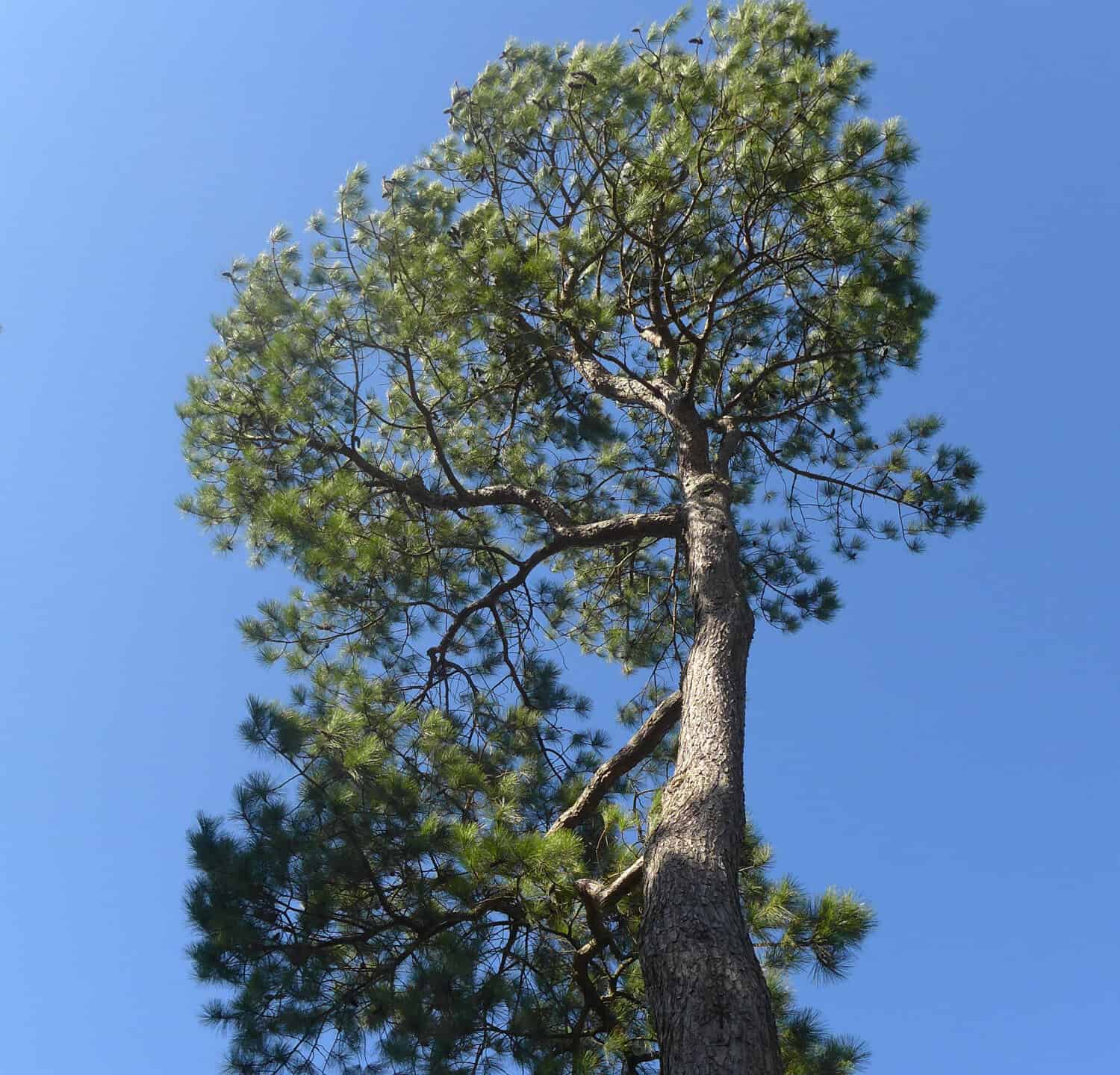
The tallest tree in Texas has a circumference of 178 inches and a crown spread of 65 feet. And it’s also 138 feet tall!
©Sophie Leguil/Shutterstock.com
Reaching 138 feet tall, the Texas A&M Forest Service declared this loblolly pine the champion tree of Texas. That’s about the height of a 13-story office building. The tree has a circumference of 178 inches and a crown spread of 65 feet.
After measuring, the Texas A&M Forest Service gave this loblolly pine a tree index of 332 points. The tree index point system works by combining the trunk circumference in inches with the tree’s total height in feet plus one-quarter of the average crown spread in feet. And that’s how they came to 332 points for the tallest tree in Texas.
Before this, Rusk County held the title for the tallest tree since 2013. Its prized tree had an index of 309 points. Consequently, it was also a loblolly pine tree.
Where Is the 138-Foot Loblolly Pine Located?
The tallest tree in Texas resides within the 20,000-acre Boggy Slough Conservation in Trinity and Houston counties. It is west of the city of Lufkin. Specifically, you can find the tree adjacent to the Cochino Bayou. There is an old rail line that, when it was in service, ran from the mill in Houston County to Lufkin.
But because the tram line was abandoned, the Texas A&M Forest Service estimates that it’s been over 100 years since the Southern Pine Lumber Company logged the area. That saved the tallest tree in Texas from being cut down!
How Old Is the Tallest Tree in Texas?
The Texas A&M Forest Service believes that logging in the area stopped over 100 years, making the tree at least that old.
About Loblolly Trees
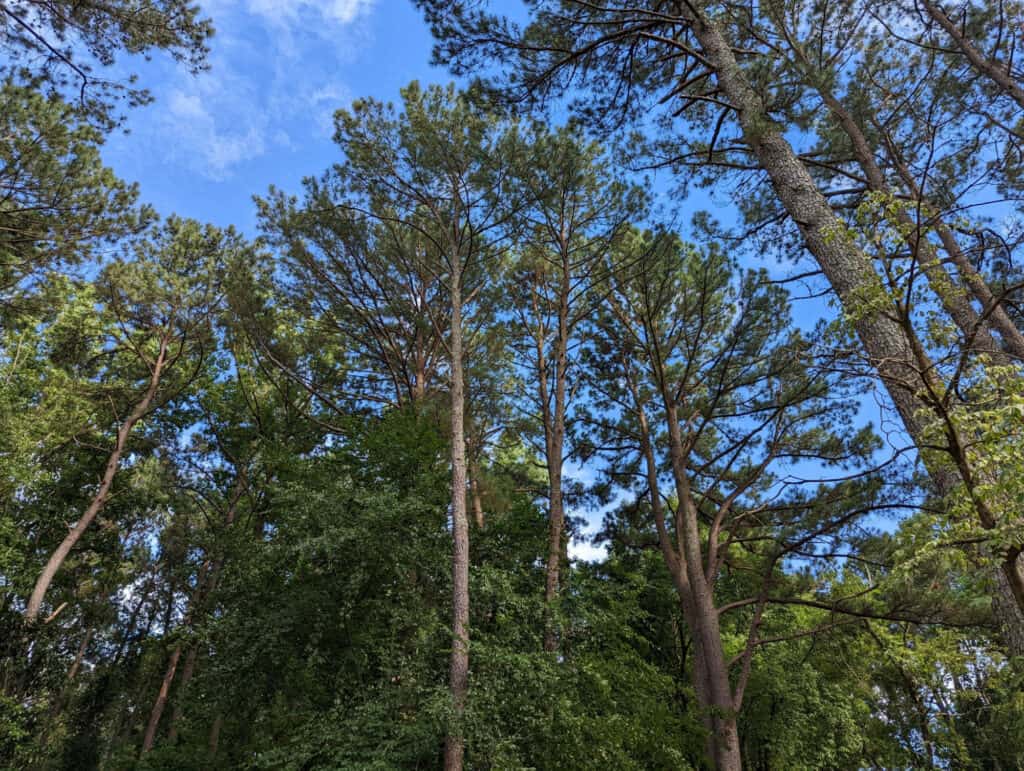
Loblolly pines are the second most common tree in the US and among the fastest-growing trees in Texas.
©Sierra Tango/Shutterstock.com
Loblolly pines are the fastest-growing trees in the state and the most prominent pine species in Texas. They are also prized as the most commercially valuable of the pines in southern Texas. The wood has a wide range of uses, including lumber, pulp, boxes, crossties, posts, and fuel.
On average, the tree grows to 60-100 feet tall and has a spread of 25-35 feet. The loblolly pine needles are typically dark green in color. The cones they produce are three to six inches long, narrow in size, and red-brown in color. The loblolly grows in various soils and only needs about one to two inches of water per week. What is nice about the loblolly in Texas is that it is pretty tolerant when it comes to droughts.
They do well in Hardiness Zones 6-9. Zone 6 includes the Mid-Atlantic United States, like Pennsylvania, West Virginia, into the Carolinas. Zone 7 and 8 include the middle southern states such as Oklahoma, Arkansas, and northern Mississippi. Zone 9 encompasses deep south states like Florida, the lower half of Texas, and Louisiana, not to mention the west-coast state of California. The loblolly pine does well in the majority of states in the US.
Loblolly pines have an incredible growth rate of 24 inches per year. Compare that to other trees in Texas, like the white oak or eastern red cedar, which grow about 12 inches per year. To fully flourish, the loblolly pine needs at least six hours of direct sunlight a day. Since the surrounding area of Lufkin boasts of 206 sunny days on average per year, this is not a problem for the loblolly pine.
Wildlife Around the Tallest Tree in Texas
As a conservation area, the Boggy Slough is home to many types of creatures. However, these animals, in particular, gain many benefits from loblolly pines. From using the trees as shelter to eating the seeds loblolly trees produce, these animals live where loblolly pines are abundant.
Carolina Chickadee
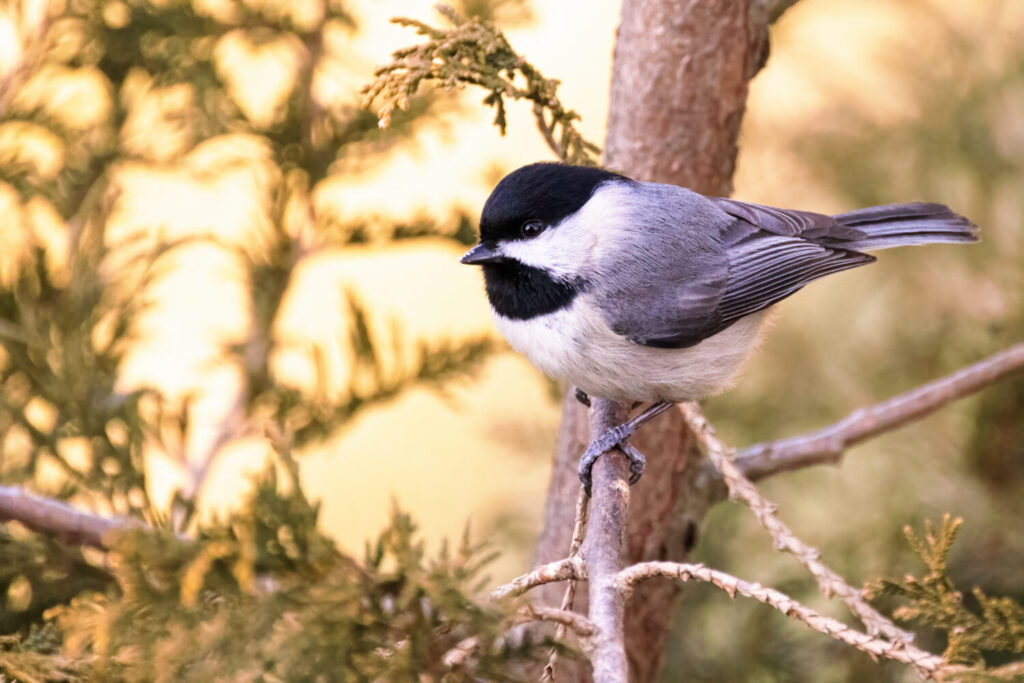
Because of the undisturbed hardwood forests in Boggy Slough, you are likely to spot a Carolina chickadee.
©Ami Parikh/Shutterstock.com
These birds are distinctive with the black cap on their heads and black bib that dips below their beaks. Carolina chickadees have bright white cheeks, while the rest of their body is covered in soft gray feathers.
They tend to inhabit forested areas or parks with large trees. Because of the undisturbed hardwood forests in Boggy Slough, you are likely to spot a Carolina chickadee. They like to eat the seeds produced by loblolly trees, such as the tallest tree in Texas. Loblolly trees are also excellent for hiding from predators. However, Carolina chickadees prefer to nest in cavities of dead trees, stumps, old woodpecker holes, and the like. So, unless there is a rotten cavity on the loblolly pine, a Carolina chickadee won’t use it for nesting.
Brown-Headed Nuthatch
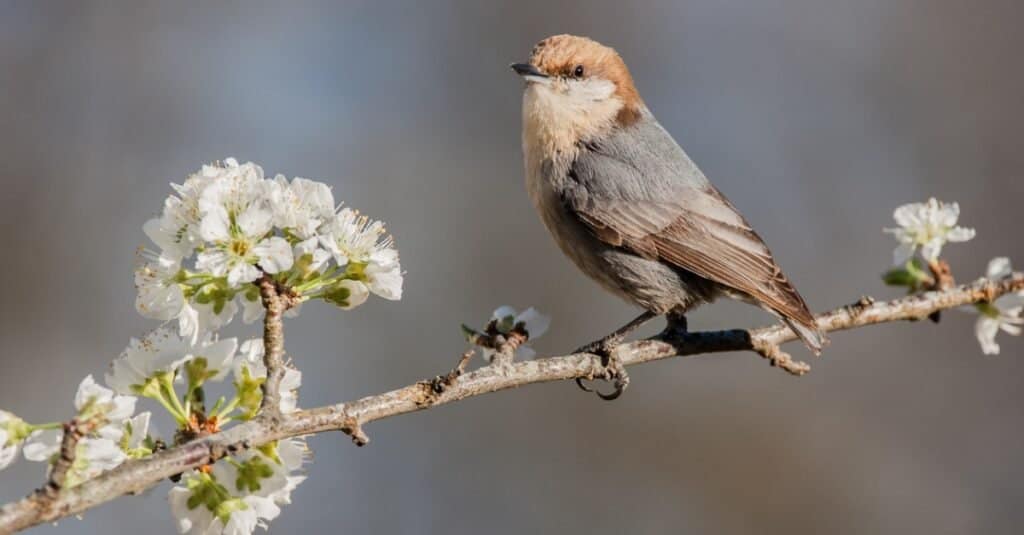
The brown-headed nuthatch is around four inches long and is very social.
©iStock.com/MattCuda
You can find this bird mostly in east Texas. Brown-headed nuthatches are highly social, and members of the same family will often preen each other. As they sit next to each other on a branch, a brown-headed nuthatch will reach over and straighten the other’s feathers.
Primarily dining on insects, brown-headed nuthatches forage for food in bark crevices, often on pine trees. This bird will even use bark chips as tools to split loose bark, looking for insects underneath. In the winter, when insects and spiders are scarce, they will forage for pine seeds. Loblolly seeds, like from the tallest tree in Texas, are just what the brown-headed nuthatch is searching for.
Eastern Wild Turkey
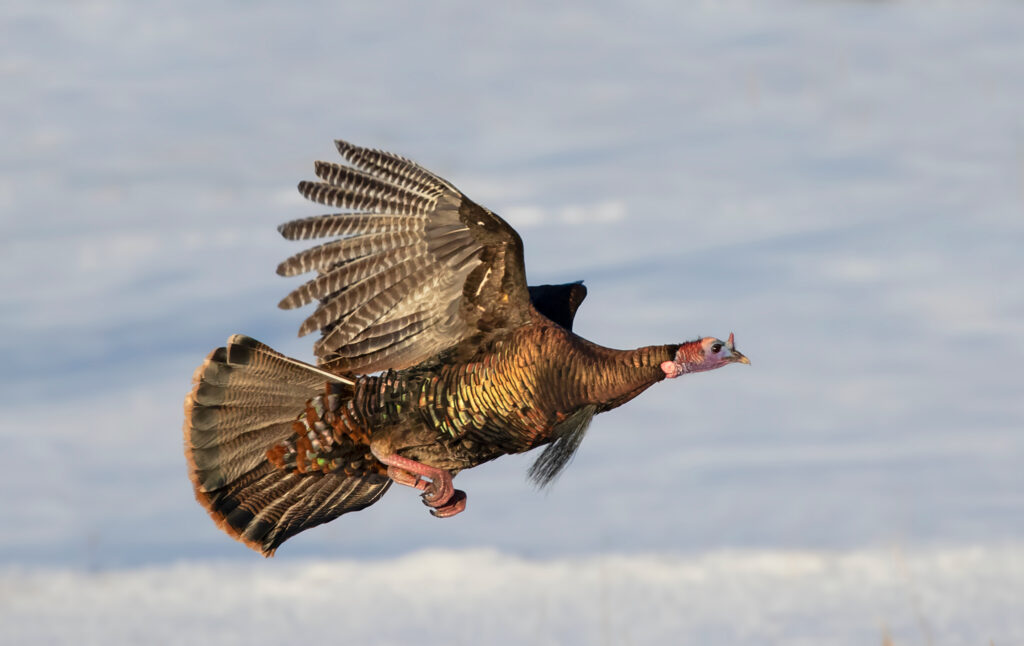
The male’s feathers are dynamically colored with iridescent copper, bronze, green, gold, and red tones.
©Jim Cumming/Shutterstock.com
As one of three turkey subsets that inhabit Texas, the eastern wild turkey resides in the eastern part of the state. One incredible feature of these wild turkeys is that they have 5,000 to 6,000 feathers. The male’s feathers are dynamically colored with iridescent copper, bronze, green, gold, and red tones. While females have similar coloration, the hues are much duller, making them look brown from a distance.
Both males and females have almost bald heads and bare legs that are pink in tone. The males develop a spur on the lower third of their leg, which grows to be two inches long and pointed. This is for fighting off other male turkeys during the breeding season. Females also grow spurs, but they are smaller and more blunt.
Biologists depict the ideal turkey habitat as a mix of mature pine and hardwood stands. The eastern wild turkeys also need an open underlying layer of vegetation in that forest. Eastern wild turkeys use loblolly pines for nesting and eat the seeds from the tree, such as the tallest tree in Texas. The undisturbed conservation area of Boggy Slough is a perfect place for eastern wild turkeys.
The Tallest Trees in Texas
While this loblolly pine holds the record for the tallest tree in Texas, it did not take the title at the national scale. According to the American Forest National Register of Big Trees, the tallest tree is a Nootka cypress in Jefferson County, Washington. That specimen has 585 points.
However, Texas still has 85 champions or co-champions on the register. So, that’s still something to boast about!
The photo featured at the top of this post is © Sierra Tango/Shutterstock.com
Thank you for reading! Have some feedback for us? Contact the AZ Animals editorial team.







